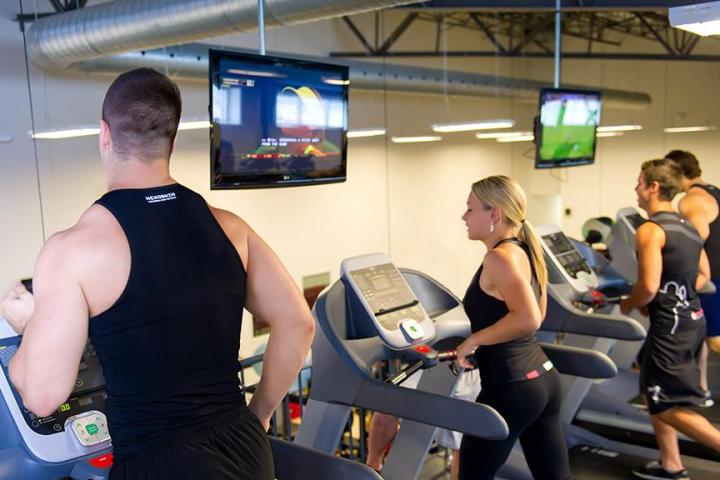
Opposite from heart monitor devices that are strapped tightly around the body, there’s nothing to cause discomfort when exercising in the Hexoskin shirt. The activity, heart and respiration sensors are all built into the soft fabric of the tank-top. Similar to other athletic shirts, the breathable fabric is conducive to managing airflow as well as moisture collected when working out. The Hexoskin can also be cleaned within a regular washing machine, assuming the owner uses cold water and doesn’t toss it into the dryer afterwards.

On the right side of the body, users will find a pocket for the Hexoskin device that stores all the fitness data. Offering more than 150 hours of recording time, the device can also automatically transmit the fitness data over Bluetooth to a mobile device like an iPhone or iPad. If a mobile device isn’t available, the Hexoskin device can be connected directly to a computer via USB. Like most fitness gadgets, the USB cable is also used to charge the Hexoskin device which has about 14 hours of battery life before requiring a recharge.
In addition, multiple people wearing the Hexoskin shirt can transmit data to a single mobile device. This would be extremely useful for coaches, basically providing an analysis of which players are working the hardest and which players that need to step up their game. Similar to a Fitbit product, the Hexoskin also offers an analysis of sleep patterns. Specifically, the Hexoskin tracks breathing patterns, heart rate when at rest, each time you change positions during the night and overall sleep efficiency. Once again, this is ideal for amateur and professional athletes as getting a great night of sleep helps them perform at maximum levels the following day.

The Hexoskin creators are providing an Open API for all data collected by the smart shirt, so it’s likely that we will see compatibility with fitness apps like RunKeeper or social networks like Facebook. The team is also looking for developers to create applications compatible with the Microsoft Kinect, Google Glass and Pebble smartwatch.
Detailed on the Indiegogo project page, there are multiple backing levels for one shirt and device ranging from $339 to $399. The first batch of 100 smart shirts is expected to roll out to early backers on January 2014, 150 more during February 2014 and the reminder during March 2014. As with all projects on Kickstarter or Indiegogo, be aware that manufacturing issues can delay the delivery window of the final product by weeks or even months.


